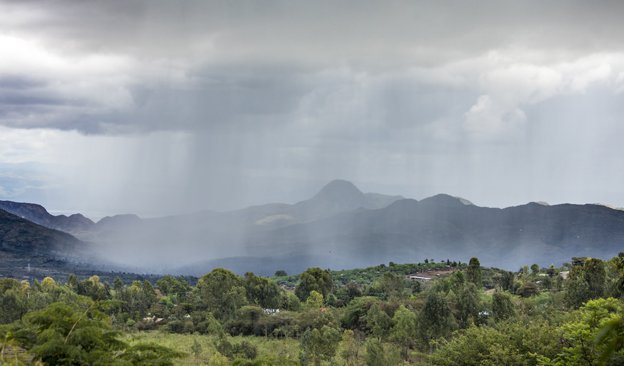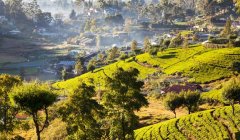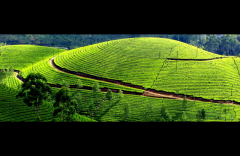Why Indian tea exports first in the world what are the distribution regions and brands of Indian tea?
There was little rain in early spring in Assam and West Bengal, leading to fewer harvesting and factory shutdowns, which are dealing with logistics challenges related to the surge in Covid-19 infection. During the economic slowdown and blockade, many employees were on leave. At the time of this writing, the weather is a much greater threat to the tea harvest than Covid-19, but infection in tea-producing areas is on the rise. With auctions slowing down and daily activities such as trucking and port activities responding, the blockade is coming with far-reaching implications. Tea production in Assam fell by 10-15 per cent in March and April and 30 per cent in March compared with 2019, according to statistics from the Indian Tea Council. It is reported that 1.92 million kilograms were harvested in North Bengal this year and 4.04 million kilograms between January and February 2019. According to TAI, demand is still strong, but tea prices have not soared as they did in 2020.

Hailstorms did not help. The rainfall in January and February was 14.2 millimeters, much lower than 28.47 millimeters in the same period last year. As of February, Cachar had received only 4.15mm bullets. The rainfall in Mikai increased to 6.15 mm from 19.1 mm last year. Dry weather makes it more likely that hail like the hail that has occurred near the Malian tea garden in recent days in the city of Jalbay is more likely to continue. In Assam and northeastern India, contact between dry and moist air masses can bring strong winds, torrential rains and hail at 60-80 kilometers per hour. These storms, known as "spring showers", occur before the monsoon, originate in the Chotanagpur Plateau and move eastward. Meteorologists expect higher-than-average monsoons in the coming weeks, but tea trees need steady rainfall until the summer monsoon comes. The monsoon has been intermittent in recent years. According to the Indian Meteorological Department, the last time India experienced normal monsoon weather for three consecutive years was between 1996 and 1998. The Meteorological Agency forecasts that the southwest monsoon from June 1 to September 30 will bring normal or above-normal rainfall, with an average rainfall of 907 millimetres. The privately operated Skymet weather forecasting system estimates that this year's monsoon will reach 103 per cent of the long-term average (LPA). According to a report by the Assam Sentinel, rainfall will be 109% of LPA in 2020 and 110% in 2019. Assam's first-quarter harvest accounted for about 10.5% of the region's annual harvest, usually 75 million kilograms. In 2020, the region produced 618 million kilograms of tea, accounting for more than half of India's tea production.
Important Notice :
前街咖啡 FrontStreet Coffee has moved to new addredd:
FrontStreet Coffee Address: 315,Donghua East Road,GuangZhou
Tel:020 38364473
- Prev

Sri Lanka to create the world's cleanest tea Sri Lanka black tea three brands expensive
Sri Lanka government officials have issued a controversial decree essentially cutting off the supply of fertilizers, herbicides and pesticides in an effort to keep local tea intact and profitable. The project is wide-ranging and addresses soil depletion, aging livestock, labour issues, domestic consumption and exports. due to
- Next

What is the best tea in Nepal? How much is the authentic Himalayan black tea per jin?
Twenty years ago, the Nepalese government turned its attention to tea, partly to alleviate rural poverty and, on the other, to generate foreign income through exports of sustainable production. Exports of Himalayan Nepalese tea have expanded, and long-term investment since 2001 paid off, when Nepal first adopted
Related
- A complete list of coffee bean names and their meanings! What is Yejia Shefi coffee? Where is Mantelin coffee?
- What grade does Arida Manor Kaduai coffee beans belong to? What treatment is Arida ASD slow anaerobic sun exposure?
- The milk tea cup becomes smaller?! Overlord Tea Girl launches a new "Return to Yunnan" series
- Accused of selling counterfeit and high-priced coffee beans! Well-known boutique coffee brand "Oukelao" bowed and apologized!
- How to make espresso dumplings? Can I eat coffee and glutinous rice balls together?
- Save the unformed and stagnant powder cakes in one second! What is the problem with stagnant water in the powder bowl of the espresso machine?
- What does hand-brewed coffee stop mean? Why is it not recommended to make coffee by hand?
- Is it normal to smell like coffee? Why does coffee smell like alcohol? What's wrong with the strong smell of cold extract ice dripping ice brewed coffee?
- How to solve the problem that hand-brewed coffee extraction takes too long? Why is the water flowing so slowly when making coffee?
- The main points of making Australian white coffee, the proportion details, how does Australian white properly foam and blend the flowers?

